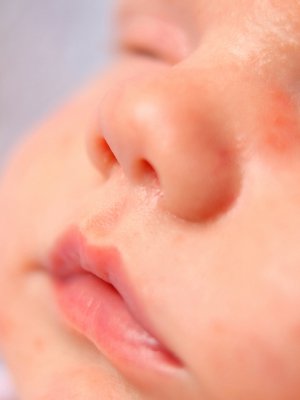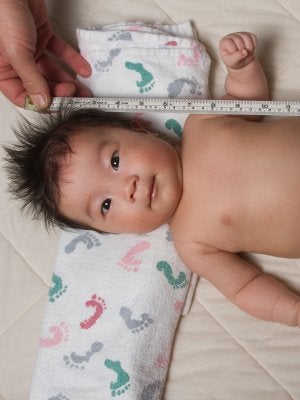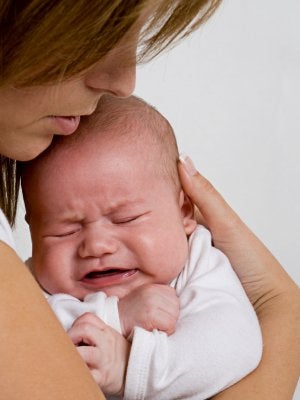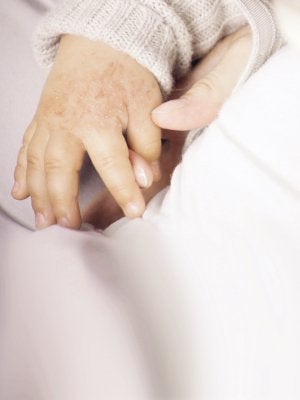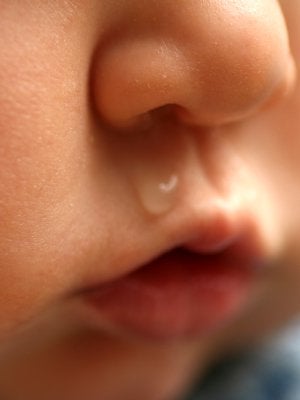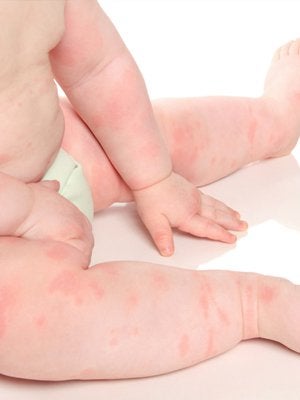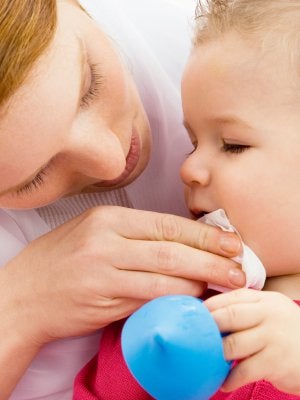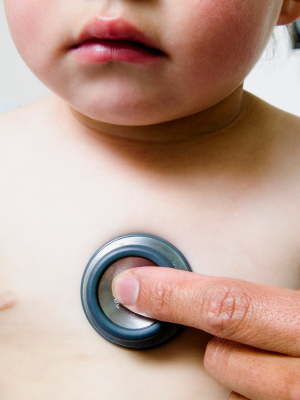
We believe breast milk is the best food for infants. When in consultation with their healthcare professional, mothers and families find that optimal breastfeeding is not possible due to their infant’s medical condition, formulas for special medical purposes play a vital role in providing essential nutrients to infants. We have a global commitment to market breast-milk substitutes responsibly.
This website is about the management of cows’ milk protein allergy and nutritional solutions intended for infants. By continuing on this website, you accept that Nestlé Health Science supplies the information at your own request.
Are you a healthcare professional (HCP) or a parent?
ATOPIC DERMATITIS
Atopic dermatitis (AD), also referred to as eczema, is a highly pruritic, chronic, relapsing and inflammatory skin disorder.1 It is the most common inflammatory skin disease in children and affects up to 20% of children worldwide.2 AD is most prevalent in early childhood and usually appears from six months to five years of age.3
The symptoms of AD in infants include patches of skin that are red or brownish, dry, cracked, scaly or itchy skin, especially at night.4 AD can appear almost anywhere on the body; however, in infants, AD usually appears as tiny bumps on the cheeks and primarily involves the face, the scalp and the extensor surfaces of the limbs.5 It is typically an episodic disease of exacerbation, consisting of flares, which may occur two or three times per month, with remissions, but AD can be continuous in some children.6
What causes Atopic Dermititis in infants?
Around 50–70% of children with an early onset of AD are sensitised to one or more allergens.4 These are mainly food allergens, e.g. cows' milk protein7, which is responsible for AD in 20–80% cases.4
Atopic Dermatitis as a symptom of Cows' Milk Allergy
Atopic dermatitis in infants is one of the most common cutaneous symptoms of Cows' Milk Allergy (CMA).8 Approximately one third of children with AD have a diagnosis of CMA.7
The majority of infants affected with CMA have at least two symptoms affecting at least two different organ systems.10,11 If, you suspect non-IgE mediated CMA, you can use the CoMiSS® tool16 to score the combination of their symptoms and assess the likelihood of CMA.
Other signs and symptoms related to CMA13,14,15- Gastrointestinal/Digestive: Vomiting, reflux, regurgitation, anorexia, diarrhoea, constipation, abdominal pain, blood in stools
- Respiratory: Chronic cough, sneezing, wheezing, shortness of breath, runny nose
- Skin: Rash, atopic dermatitis, urticaria, angioedema
- General: Failure to thrive, anaphylaxis, insomnia, inconsolable crying, pallor and tiredness

- An easy-to-apply score based on an estimation of the surface covered by the dermatitis, using the surface estimation drawings from burns
- The larger the area covered by the dermatitis, the higher the score
- In addition to the skin score, if any of the following signs or symptoms related to CMA are present, they should also be given a score using the CoMiSSTM tool. These include crying, diarrhoea, constipation, regurgitation, skin (urticaria) and respiratory symptoms.
COMISSTM AWARENESS TOOL
The Cows' Milk-related Symptom Score (CoMiSSTM) is a simple, fast and easy-to-use awareness tool designed to help you more easily recognise the signs and symptoms that can be cows' milk-related in infants and young children.

If you suspect your patient is suffering from symptoms that may be suggestive of CMA, use the CoMiSSTM tool to score and assess the likelihood of CMA.
Other Symptoms of Cows' Milk Allergy
References
- Leung D. and Bieber T. Lancet. 2003;361(9352):151–6
- Flohr C. and Mann J. Allergy. 2014;69:3–16
- Kamer B., et al. Postepy Dermatol Alergol. 2013;30(5)/277–8
- Nutten S. Ann Nutr Metab. 2015;66(suppl 1):8–16
- Eczema-atopic; NICE CKS, March 2013. http://cks.nice.org.uk/eczema-atopic (Accessed April 2016)
- NICE support for commissioning in atopic eczema in children 2013. https://www.nice.org.uk/guidance/qs44/resources/support-for-commissioning-for-atopic-eczema-in-children-253673821 (Accessed April 2016)
- Eigenmann PA., et al. Pediatrics 1998;101(3):E8
- Novembre E., et al. Allergy. 2001;56 (suppl 67):105–8
- Lifschitz C. and Szajewska H. Eur J Pediatr. 2015;174:141–50
- Høst A. Pediatr Allergy Immunol. 1994;5:1–36
- Koletzko S., et al. J Pediatr Gastroenterol Nutr. 2012;55(2):221–9
- Luyt D., et al Clin Exp Allergy, 2014;44:642–672
- National Institute of Health Care and Excellence Clinical Knowledge Summarises. Cows’ milk protein allergy in children, 2015 http://cks.nice.org.uk/cows-milk-protein-allergy-in-children#!diagnosissub/-617759 (Accessed October 2016)
- Vandenplas Y., et al. Acta Paed. 2015;104:334–39
IMPORTANT NOTICE: Mothers should be encouraged to continue breastfeeding even when their babies have cows' milk protein allergy. This usually requires qualified dietary counselling to completely exclude all sources of cows' milk protein from the mothers’ diet. If a decision to use a special formula intended for infants is taken, it is important to follow the instructions on the label. Unboiled water, unboiled bottles or incorrect dilution can make babies ill. Incorrect storage, handling, preparation and feeding can eventually lead to adverse effects on the health of babies. Formula for special medical purposes intended for infants must be used under medical supervision.

